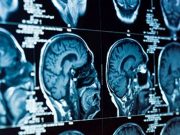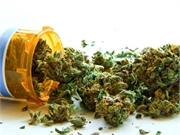Tag: Parkinson’s
MIND and Mediterranean Diets Tied to Delayed Parkinson Onset
Strongest association seen in women, with delay in onset of up to 17 years
FUS Subthalamotomy Studied in Asymmetric Parkinson Disease
Motor features improved with focused ultrasound subthalamotomy on the side opposite main motor symptoms
Vitamins E, C Inversely Linked to Risk for Parkinson Disease
Comparing individuals in highest versus lowest tertile of exposure, inverse link seen for both vitamins C and E; no link for beta-carotene, NEAC
Suicide Risk Higher Among Patients With Parkinson Disease
Increased risk not fully explained by higher rates of mental disorders
Air Pollution Tied to Neurological Disorders in Seniors
Higher fine particulate matter tied to higher risk for Parkinson disease, Alzheimer disease
COVID-19 Mortality Higher in Patients With Parkinson Disease
Higher case fatality rates found to be independent of demographic factors, such as age, sex, and race
Plasma Caffeine Concentration Lower in Parkinson Disease
Results similar for caffeine metabolites and non-xanthine marker for coffee consumption in plasma
Healthy Diet Inversely Linked to Prodromal Parkinson Disease Features
Adherence to aMED, AHEI dietary patterns inversely tied to constipation, daytime sleepiness, depression
Reduced Circadian Rhythmicity Tied to Increase in Parkinson Disease
Risk for developing PD about threefold higher in lowest quartile of amplitude, mesor, robustness
Not Enough Evidence Exists to Support Cannabis for Parkinson Disease
Consensus statement calls for more rigorous research to assess clinical benefit














